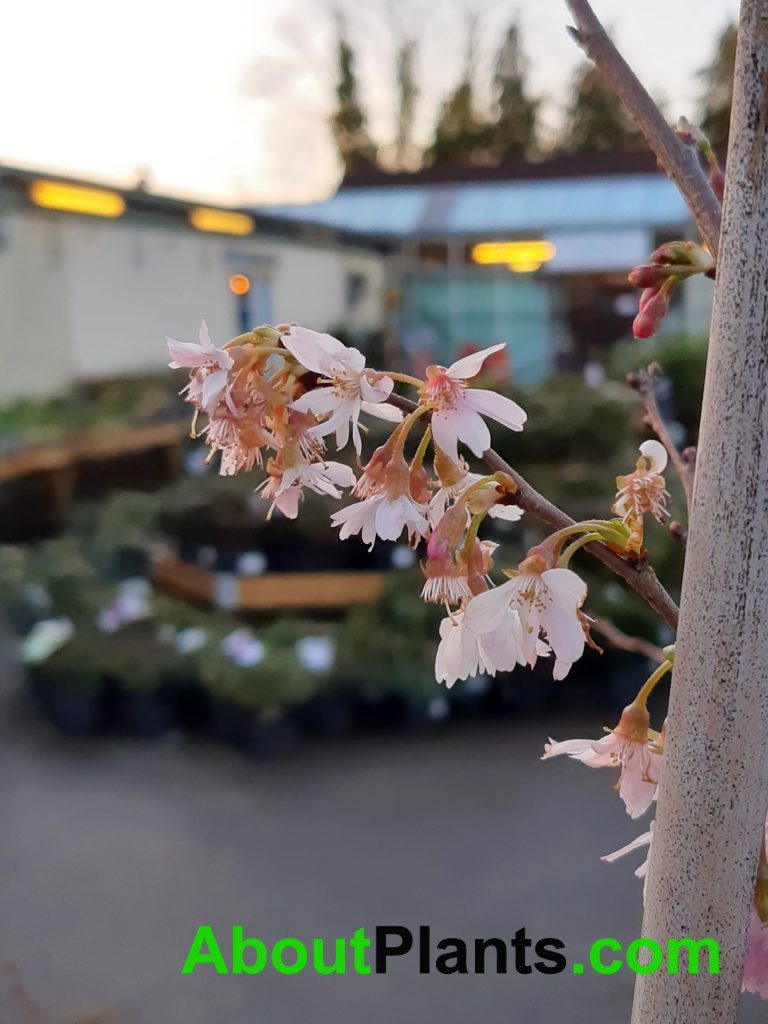Winter Flowering Cherry
Prunus is a deciduous tree with flowers which arrive in late winter to early spring. Some trees may also flower in autumn if the weather is mild. These offer a beautiful colour in spring because the flowers are white often with dark shades of pink edges, developing from pink/green buds. The trees have a beautiful bark, which can be silver in colour as in the photograph.

The prunus autumnalis often bares fruits. The fruit on some trees maybe edible, but always make sure that you have a tree with edible fruit before eating any cherries or other berries that the tree produces. This website alone is not sufficient to identify fruit that is fit for human consumption. Always speak to a professional before eating anything that grows that you do not know is 100% fit for human consumption. The prunus belongs to the family rosacea. The autumnalis rosea is a small tree which is evergreen. The leaves are small and green and like many others turn a faint burnt yellow colour in the autumn period. The prunus tends to be a relatively bushy tree although when purchased from garden centres these can be quite tall and slender because of the way the are grown.
When purchased from a garden centre they tend to be in the region of 2m tall, although they may grow up to approximately 8m after a period of time of 20 to 30 years. Because they are bushy, they may spread. The Prunus Autumnalis Rosea may spread in the region of 3m from the base of the tree. These trees are relatively hardy and can survive relatively low temperatures that are seen in many parts of Europe. They may survive down to about – 20 degrees Celsius. Below – 20 degrees Celsius expect some branches to begin to perish due to the extreme weather conditions.
Types of Soil for Prunus Autumnalis Rosea
The prunus can grow in many types of soil. These include acidic, alkaline and neutral soils. They may not like soils which have been exposed to high concentrations of salt and therefore people with gardens in coastal regions may wish to to try different types of tree, or plant the prunus in an area of the garden which is protected from any sea spray as much as possible.
These are a beautiful tree that will compliment any garden and we at aboutplants.com really like these. If the tree is sheltered from sunlight it may grow quite quickly. Ultimately, the trees can be exposed to sun light all day long; they do not need a sheltered area. In terms of aspect, the tree can be planted in almost any location within the garden and it does not matter if it is East or West, or North or South facing. Prunus trees can be propagated by seed, but this may be relatively difficult and specimens are available from any garden centre at relatively low prices. You may also be able to propagate the prunus tree from a cutting. The cutting should be of one of the branches that has relatively well established bark and flowers. Never take a cutting that is too close to the main branch of this type of tree.
Thank you for reading this article. If you have noticed any errors or inaccuracies, please inform us using the contact us section of this website. If you would like to contribute to aboutplants.com, please get in touch.